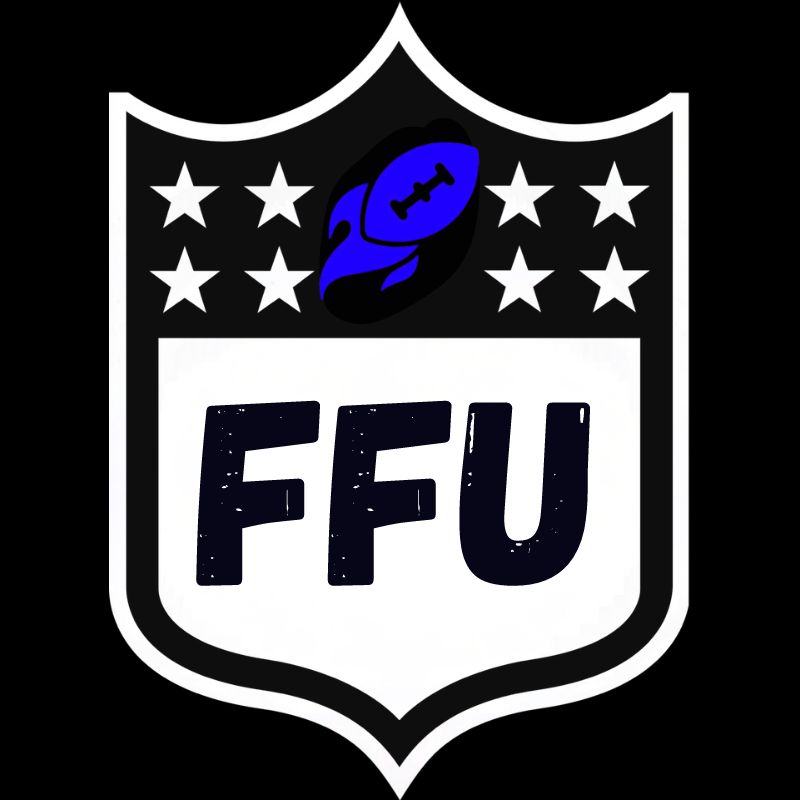For the general public, this is a how-to on the most basic of starter formats, the fantasy football redraft league. The rest of our Crash Course series will deal with the extreme chaos of more intricate fantasy football formats but “Draft Dynamite: Unleashing Fantasy Firepower in Redraft Leagues” is a beginner’s lesson on redraft.

How Does it Work?
Redraft leagues are the baby food of the fantasy football world. At some point, no matter how experienced we have become, we all started with baby food. Redraft is where everything begins. The home leagues with your family and friends that got you hooked on fantasy football, were most likely simple redraft leagues with very few outside-the-box settings.
Many of us have gone on to master this format and dominate our home leagues, but for those of you reading this article, it’s time to read along and learn how to master your home league.
How is it different?
As I stated above, it’s no different. Most home redraft leagues are as basic as they come. They are often filled out with “standard” rosters and scoring and are easy to learn on the fly.
Sure, many redraft leagues can do some funky things to scoring and rosters to spice things up a bit, we’re looking at you Scott Fish Bowl, but for the most part, they are universally loved because even the so-called “noobs” can enjoy them.
How does the Draft work?
The draft is easy. After the rosters and scoring is set up, you sit down with your friends and draft your squads. My favorite home redraft leagues are the ones that feature a live draft with the entire league in person. If you can do this in your league I highly recommend it. It’s easily the coolest part of playing fantasy football.
From there, the draft is simple. Redraft leagues are typically 15 rounds with 10 starters and 5 bench spots and aren’t much deeper than that. this allows for extra flexibility in your lineup and allows you the opportunity to find replacements on the waiver wire in the event of injuries or busts.
A look at the Rosters
Rosters are open to league preference, but a typical roster is simple and roughly 15 players. It’s rare to see a redraft league with deep rosters or uncommon positions. Most redraft leagues feature one quarterback, 2 running backs, 2 wide receivers, and one tight end. This can occasionally be altered in leagues that want to add a DST of a kicker.
Some leagues choose to add Individual Defensive Players, but these are typically more advanced leagues that want to take their experience to the next level. I wouldn’t recommend that for beginners though.
How does the Waiver Wire work?
The waiver wire in a redraft home league is typically the most plentiful waiver wire you will find in fantasy. Due to the short benches and 12 teams in the league, there tends to be an abundance of replacements available on the waiver wire.
This is a good thing because with a format often enjoyed by less experienced managers, it is important to leave them with options to replace their mistakes. Rookie managers tend to make rookie mistakes and if they don’t have usable options on the waiver wire to rectify those mistakes, they can quickly sour on the league and fantasy football altogether.
How the scoring works
Again, scoring is not impacted by the league and can be done in any manner of your choosing. There is no wrong or right answer here, it’s all up to you and your league mates.
Typically redraft home leagues are the most basic of scoring leagues, often with “standard” settings in effect.
My Strategy
- Punt QB in 1QB Leagues: It seems counterintuitive to say punt is the most important position in NFL football, but this isn’t the NFL. In a 1QB league, there are simply too many viable options to warrant a high draft pick on a quarterback. Josh Allen may be an elite fantasy option but at a second-round cost, he isn’t worth the pick. Instead, you can get a quarterback like Dak Prescott 10 rounds later who will still put up solid production.
- The QB/WR Stack: This strategy allows you to have huge boom weeks when your stack goes off. There is nothing more satisfying than a Joe Burrow to Ja’Marr Chase touchdown than realizing you have both on your roster and get double points for the play.
- Zero RB: Once upon a time the first few rounds of fantasy drafts were composed mostly of running backs, but with inconsistencies and injuries, the position has become slightly devalued. This is even more true with many NFL teams running a committee backfield. A solid strategy is to use an early pick on one high-end stud running back and then fill out your roster with late-round value picks at the position. There are so many running back injuries that it’s the easiest position to replace off the waiver wire.
- The Positional Sweet Spots: This takes a bit of research, but if you check out articles such as our series comparing the ADP (Average Draft Position) on each site in comparison to ECR (Expert Consensus Rankings) you will notice that certain players and positions tend to be better targeted in certain portions of the draft. Receiver, for example, tends to be deeper and have viable targets into the later rounds, whereas running back tends to fall off quickly.
In Closing
This format is the bread and butter of fantasy. This is where your journey is likely to begin. Enjoy it and embrace it fully. The more research and effort you put in, the more likely you are to have good results.
Fantasy football does involve some luck, but with proper preparation, you make your luck.
Don’t forget to check out the rest of the Crash Course Series. Here is the draft board from the 2024 Fantasy Football Universe Redraft league.


